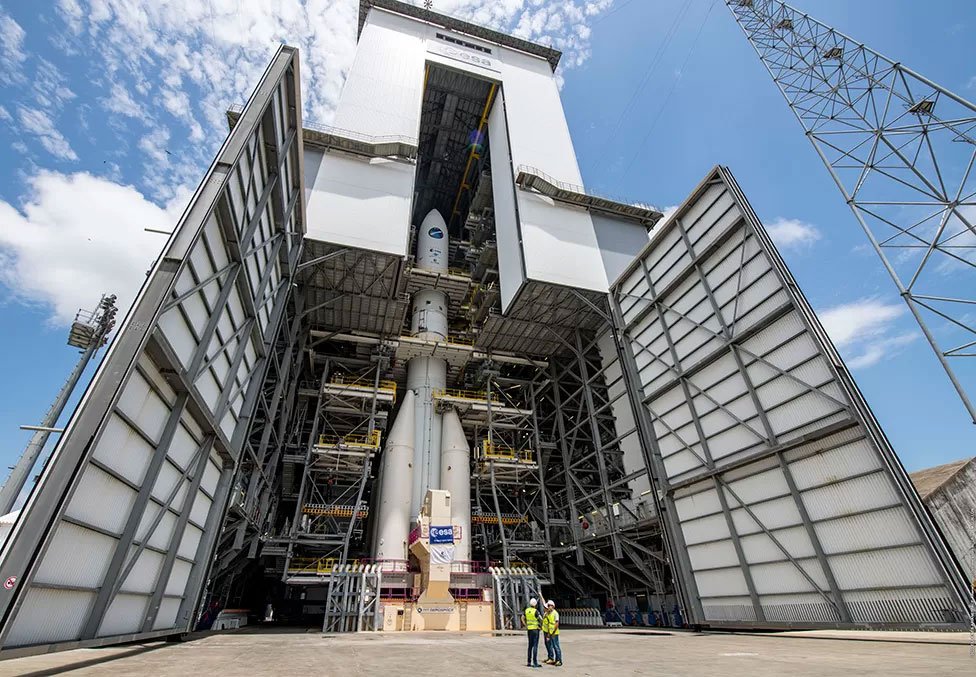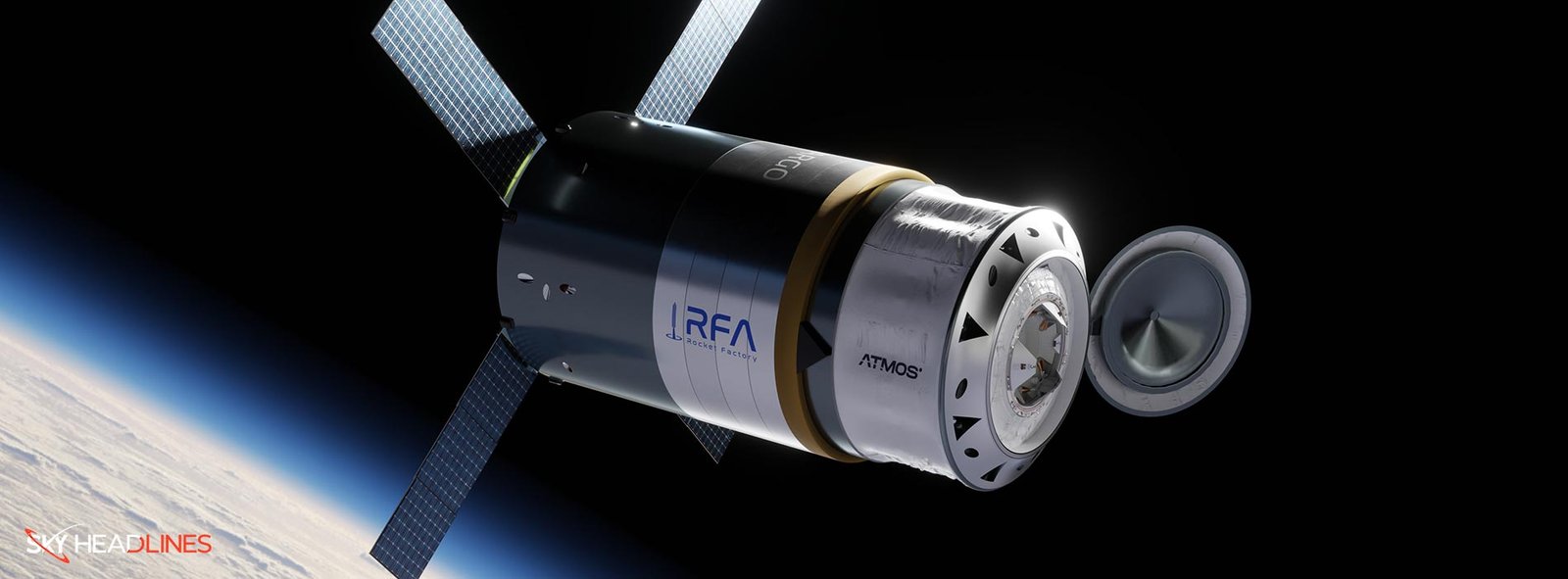Space capsules represent one of the most compelling developments in the modern era of space exploration and technology. Unlike the romanticized rocket ships of early science fiction, a space capsule is a practical vehicle, optimized not for aesthetic appeal but for safety, efficiency, and the stark demands of the vacuum of space.
The Genesis of Space Capsule
The journey of the space capsule began with the Cold War space race. The term ‘capsule,’ in the aerospace context, denotes the compartment that houses the crew and instrumentation. The Soviet Union’s launch of Sputnik in 1957 ignited the quest for manned spaceflight, which necessitated the development of a vehicle that could sustain human life in the harsh realm of space.
With Yuri Gagarin’s inaugural manned voyage aboard Vostok 1 in 1961, the space capsule was etched into the annals of history. Vostok’s spherical design was propelled by ballistic missile technology, which pivoted the direction of spacecraft design toward reusability and crew survivability.
Engineering Marvels and Human Endeavor
The development of the space capsule is a tale of unyielding human ambition coupled with sophisticated engineering. The constraints of extraterrestrial environments demand a design that prioritizes life support systems, control mechanisms, re-entry protection, and communication modules. Each system within the capsule must operate with unfailing precision and reliability.
Life Support and Environmental Control
A key challenge is crafting a life support system that replicates Earth’s atmosphere. The intricate balance of oxygen, carbon dioxide, and nitrogen—paramount for human survival—is maintained artificially within the capsule’s compact quarters. These environmental control systems are an amalgamation of science and necessity, ensuring that the void’s silence does not become an echo chamber of the astronauts’ mortality.
Structural Integrity and Thermal Protection
As a vessel traverses the boundary between Earth’s atmosphere and space, it encounters immense thermal and structural stress. The heat shield’s development, made of ablative material, is pivotal. It chars and erodes during re-entry, absorbing and dissipating the lethal temperatures generated by friction with the atmosphere. Thus, a Space capsule integrity protects against the sun’s unchecked ferocity and the atmospheric onslaught as it returns home.
Communication and Control Systems
Control systems in a space capsule enable navigation through the celestial seas, with astronauts and ground control in a constant loop of information and commands. Communication technology bridges the terrestrial and the cosmic, facilitating not only operational command but also the psychological support essential for astronauts’ well-being during the solitude of space travel.
The Cultural Significance of Space Capsules
The symbolism of space capsule extends beyond their physical construction. They are harbingers of a new epoch in human evolution, symbolic of our venture into the cosmic ocean. With each mission, we grasp more of the universe’s vast complexities and our place within it.
Political and Ideological Impacts
The space race was not merely a demonstration of technological prowess but also an ideological battlefield. The space capsule, as the space race’s frontline warrior, was a testament to the political will and intellectual capital invested in the dominance of space. It epitomized the pursuit of knowledge under the guise of geopolitical competition.
Inspiring Technological Spinoffs
Technologies developed for space capsule have cascaded into civilian use, showcasing a direct correlation between space-oriented innovation and terrestrial advancement. For instance, the miniaturization of electronics, developed to fit within the constrained space of a capsule, paved the way for compact computers and smartphones that have revolutionized modern life.
Social and Philosophical Reflections
The voyages of space capsules prompt profound reflections on humanity’s trajectory and our existential quests. The sight of a space capsule descending to Earth, suspended by parachutes, is a modern chronicle of Icarus—only, in this narrative, humanity flirts with the sun and returns not with waxen wings melted but with insights gained from touching the heavens.
Who built the space capsule?
Different space agencies and companies build space capsule. For instance, NASA has historically been responsible for developing various capsules for its missions. However, the current trend involves significant collaborations with commercial aerospace companies such as SpaceX and Blue Origin. The Russian Space Agency (Roscosmos), the European Space Agency, and other international bodies have also contributed to space capsule development.
What is the name of NASA’s capsule?
NASA has had several capsules throughout its history, including the historic Apollo space capsule used during the Moon missions. More recently, capsules like Orion are part of NASA’s Artemis program. The Crew Dragon, developed by SpaceX, is another example used in partnership with NASA for modern crewed missions to the International Space Station (ISS).

The Legacy and Future of Space Capsule
The evolution of space capsule from Vostok to Apollo and beyond to the International Space Station (ISS) and commercial ventures like SpaceX’s Dragon is a continuum of improvement and ambition. Today’s space capsule are becoming symbols of international collaboration and the democratization of space access.
How does a space capsule return to Earth?
A space capsule returns to Earth through a process that involves deorbiting, re-entry, and landing. The capsule first separates from any other spacecraft sections and maneuvers into a trajectory for deorbiting. During re-entry, it relies on a heat shield to protect against extreme temperatures due to atmospheric friction. This heat shield is typically made of ablative material that chars and erodes to absorb and dissipate the heat. After re-entry, parachutes are deployed to slow the capsule’s descent to a safe landing speed. Some modern capsules, like SpaceX’s Dragon, are designed to land in the water, while others might be designed for land landings.
Development of a Robotic Cargo Space Capsule by the European Space Agency
The European Space Agency (ESA) has announced an innovative competition to develop a robotic cargo space capsule, initiating a transformative approach to space project management. This autonomous vehicle is slated to streamline cargo transport to the International Space Station, with its initial launch projected for 2028. This competition represents a strategic pivot from ESA’s traditional project-handling methodology, leveraging commercial partnerships to enhance efficiency and innovation in space travel.

Evolving Space Logistics through Innovative Partnerships
With the European Space Agency (ESA) opening doors for a groundbreaking endeavor, they are inviting contributions that will propel the logistics of space exploration forward. This space capsule journey is not just a single mission but the beginning of a long-term service model envisioned to extend potentially to lunar expeditions.
Commercial Collaboration and Cost Sharing of Space Capsule
The directive encourages commercial entities to shoulder a portion of the development costs, thereby fostering a service-based market for space resupply missions. ESA, positioning itself as the prime customer, underpins this commercial venture, guaranteeing a customer base for the chosen consortium. This financial and technical symbiosis aims to cultivate a fertile ground for aerospace innovation, with ESA contributing seed funding and support to catalyze the development process.
Future-Proofing Space Travel: Capsule Versatility and Adaptability
Moreover, the successful implementation of this cargo service could set the stage for the capsule’s evolution into a manned spacecraft. ESA Director-General Josef Aschbacher emphasizes the forward-looking design of the capsule, contemplating future adaptations for crew transport as decided by member states. The Space capsule versatility is evident in its conceptual framework, designed to accommodate modifications for varied space missions.
Incorporating International Aims and Ambitions of Space Capsule
The inception of this space capsule aligns with a broader strategic shift endorsed by the ESA member states at a policy-defining summit in Seville. Inspired by NASA’s commercially successful partnerships, exemplified by companies like SpaceX, ESA is adopting a similar procurement model. This paradigm has demonstrated the potential for lowering costs while accelerating technological advancements in the space sector.
Aligning with Europe’s Aerospace Policy and Funding Dynamics
This strategy also aligns with Europe’s broader aerospace policy goals, addressing the urgent need for private investment in the space sector. It seeks to remedy the stark contrast between public and private funding in European space endeavors. ESA’s intention to diversify its procurement strategy extends to launch services, reflecting a determined effort to rejuvenate Europe’s position in global space leadership amidst current challenges with launcher developments like Ariane-6 and Vega-C.

Commitment to Environmental Sustainability and Space Safety
The Seville Summit’s decisions also encompassed resolutions to enhance environmental sustainability using space technology. ESA’s initiatives in this domain include supporting efficient aircraft routing using space data and advocating for a “Zero Debris Charter” to maintain orbital cleanliness.
UK’s Regulatory Framework for a Sustainable Space Environment
The forthcoming regulatory framework in the UK underscores a commitment to fostering a responsible and sustainable space environment. Moreover, by incentivizing best practices in space operations, the UK intends to lead by example. This involves advocating for the removal of space debris and promoting responsible stewardship of the space environment.
A Holistic Approach to Space Exploration and Environmental Stewardship
This initiative not only marks a significant advancement in space logistics and transportation technology but also reflects a comprehensive approach toward responsible and sustainable space exploration and utilization. With the collective resolve of ESA member states, the path is set for a progressive trajectory in European space ventures, aiming for strategic outcomes in both commercial success and environmental responsibility.
International Space Station and Collaboration
The ISS, a floating laboratory, is resupplied by a cadre of international space capsules. It stands as a testament to global cooperation in space. Here, the capsule is not only a transporter but also a lifeline—carrying personnel, experiments, and vital supplies.
Commercial Ventures and Public Involvement
Commercial spacecraft, such as the Crew Dragon and Blue Origin’s New Shepard, signify a shift toward broader public involvement in space endeavors. These capsules reflect a future where space exploration transcends national programs and becomes a collective human undertaking.
Sustainability and Interplanetary Travel
As aspirations turn to Mars and beyond, space capsules are evolving to meet these new horizons. The rigorous demands of interplanetary travel require that we not only sustain human life for the duration of a trip but also land and launch from foreign soils. The next generation of capsules will embody sustainability and adaptability in design and function.
Conclusion
In conclusion, space capsules are not mere vehicles but the embodiment of human curiosity, the fruits of our most advanced technological trees, and a tangible connection between our planetary cradle and the potential of an interstellar future. As we venture deeper into the cosmos, the role of the space capsule will undoubtedly expand, encapsulating our dreams, challenges, and the unyielded spirit of exploration.





